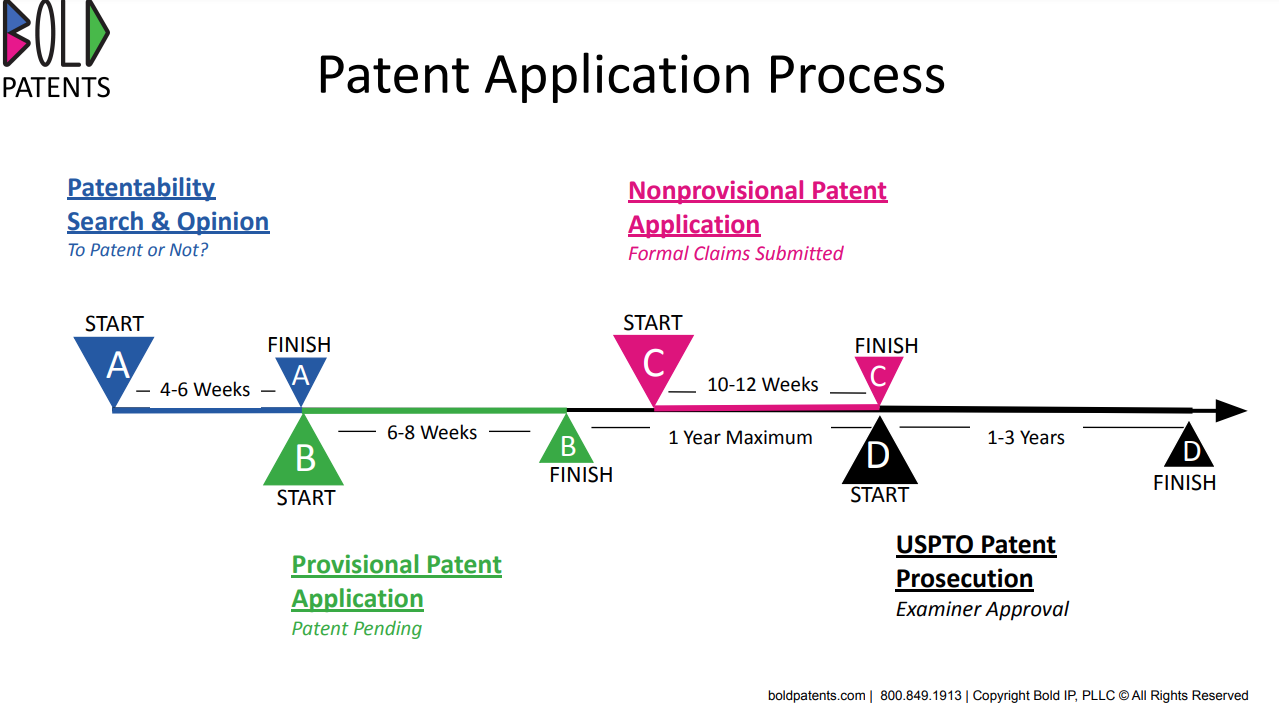You have an original idea. You may be excited to be the next billionaire because of your brainchild, but you need to take a breath. An idea alone can not be patented. However, if your idea can turn into an innovative process, then you may be able to protect it like any other viable invention.
Let’s take a look at what you need to know to patent a software idea.
What Type of Software Is Patentable?
While all inventions start as an idea, not every idea can be called an invention. Understanding the difference between ideas and inventions is critical to know if it actually qualifies for a patent. One way to tell if your idea is an invention is if you can describe it in the terms as outlined in the utility patents application. If you cannot tell if it is a process, a machine, or some combination of the two, your invention may be too abstract or is still in the idea phase which you cannot patent.
Before you dive into whether your software idea is patentable, let’s first eliminate what isn’t patentable. Your software is not eligible for a patent if the following are being submitted as a stand-alone:
- Math formulas
- Algorithms
- Economic practices
It should be noted that patents can be obtained for ideas, systems, methods, algorithms, and functions if they are embodied or incorporated in a software product.
The question of whether something is an abstract idea, like the above, is at the heart of the debate on whether software is patentable. But, software can go beyond an abstract idea if it improves the functionality of computers or processes.
Software improves computer functionality if:
- It improves computer functionality in some way
- It enables certain computations that were previously unavailable
- It speeds up processes
- It requires fewer resources
- It solves a computing challenge in an unconventional way.
- It is written with a precise focus on the technical merits of your particular software solution
So, how exactly do you patent a software idea?
How To Patent a Software Idea
According to the United States Patent and Trademark Office (USPTO), software is often classified as an abstract idea and can be difficult to be approved for a patent. But, if the software can be written out as a process, then the software may be patentable. Figuring out if your software idea meets “patentable subject matter” standards is harder than with other inventions. That’s one of the reasons why software patents have drawn so much legal attention.
To qualify for a utility or software patent, you must remember:
A software-related patent must be more than an abstract idea. For software-based inventions to be patentable, they must improve computer functionality in some unique way. It may seem common sense, but it truly takes some research. If someone can adequately solve the same problem through the same means without the help of your invention, it isn’t eligible. Simply put, if there’s another way to get from point A to point B without your help, you will be at a higher risk of getting a patent rejected.
The subject invention should turn an abstract idea into an “inventive concept”. In short, is it part of a process? Software or utility patents can be obtained for ideas, systems, methods, algorithms, and functions incorporated into a software product. For example, editing functions, user-interface features, compiling techniques, operating system techniques, menu arrangements, display presentations, program algorithms, and program language translation methods could qualify for a software patent under the guise of a process. As with any type of patent, your idea must be novel, useful, and nonobvious.
A software patent is a regular utility patent with special circumstances that the USPTO has yet to define. Because the landscape of obtaining a software idea patent is so tricky, it’s best to seek expert guidance.
How Patent Attorneys Assist With Software Idea Patents
Once you have determined that your idea is, in fact, a commercially viable invention, you will want to file a software or utility patent application. There are a lot of questions that will come up on how to patent a software idea, and this is where a patent attorney can help.
A patent attorney can assist you with the following:
- Patentability Search: After you have carefully determined that your idea can be transformed into an invention, it’s time to make sure there isn’t a similar patent by using this search engine.
- Determining What Type of Patent You Need: Not all software can receive a patent. But those that have been deemed patentable, would likely file a utility patent.
- Filing a Provisional Patent Application: This offers a layer of protection if someone later claims they had the idea before you did. Under U.S. law, the patent system is a first-to-file one, not a first-to-invent. Be cautious when sharing your idea with others. A provisional patent application is not your final submission to the USPTO, but it does give you a year of added protection.
- Filing the Nonprovisional Patent Application (NPA): This is the actual utility patent application. It’s what you file to get the USPTO to review your application and approve your patent. You have one year from the date you file for the provisional patent to complete the nonprovisional patent. Be sure to include the following:
- Flowcharts that show each step of your software process
- A detailed description of your algorithms and code
- An explanation of how your software idea works with hardware
- Submitting the Patent Application: This entails a lot of forms and the need for detailed information. The more detailed your explanations, drawings, findings, and intent for use, the better the chance of your application being approved. Click here for a step-by-step guide to the process and the forms needed to complete.
- Responding to the Office Action: An office action is a document written by an examiner in a patent or trademark examination procedure and mailed to an applicant for a patent or trademark. You have three months to respond to any non-final Office action without having to pay for a request for continued examination (RCE). However, the cost (and time needed) for responding to an office action will depend largely upon the nature of the rejections and the number of prior art references. Once a patent examiner has received your office action response and it adequately addresses their concerns, they will make a determination as to whether to allow the patent to be issued and rights to be granted. If the examiner rejects your invention, another office action is sent and must be responded to with an office action response.
- Obtaining the Notice of Allowance: Approximately 18 months after filing your application, you should be notified whether or not it has been approved. If approved, it’s time to market your patented invention.
Below is a timeline of what to expect when filing a patent for your software idea.

You can improve your odds of getting a patent by describing the technical challenges in your field of invention, and detailing how your solution addresses those challenges. And if your idea doesn’t perform any of the above, don’t worry. Your idea may still be patentable. It’s good to talk to an experienced patent attorney to determine if your concept can hold up to the USPTO patent standards.
Additional patentable software can include:
- editing functions
- user-interface features
- compiling techniques
- operating system techniques
- menu arrangements
- display presentations
- program algorithms
- program language translation methods
Since software innovators have so much more to prove, the patentability question for software inventions often comes down to how the patent and the patent claims are written. Remember to claim your invention carefully. Do not claim every method of relieving a particular pain point. Your claims should only address the pain point and solution that you have come up with.
From Abstract to Approved, Our Patent Attorneys Can Help
Understanding how to patent a software idea can be complex and overwhelming. At Bold Patents, our team of experienced attorneys can improve your odds of obtaining a software patent. From concept to protection to filing to market, we’re here for you every step of the way. Contact us today. 800-849-1913

